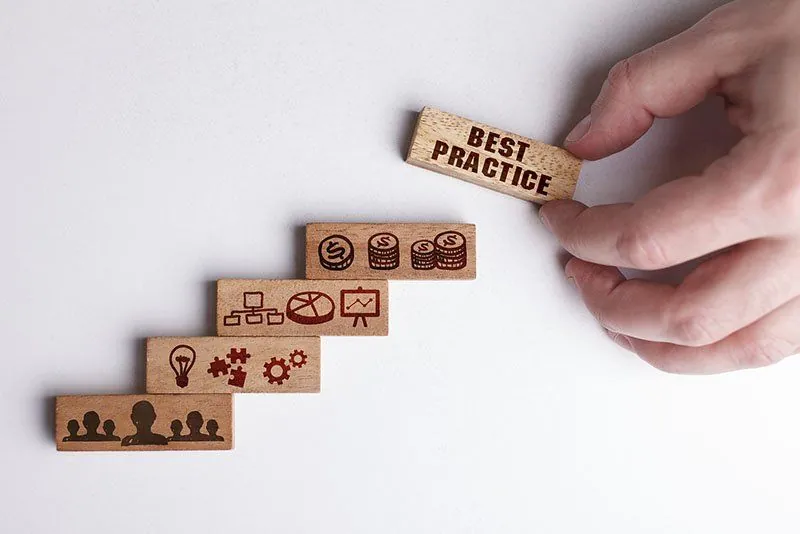Traditional, class-room based learning is by no means obsolete, but it must make room for Microlearning.
This is the new paradigm in L&D, where learners engage in bite-size learning modules of 2 to 8 minutes in duration, delivered directly to a learner’s mobile device, on demand.
It’s what learners want, and L&D professionals must rise to the challenge with these 25 microlearning best practices.
1. Build it and they will come.
Develop a resource library of microlearning content, which is searchable, and which is structured into categories, so learners can easily navigate to the content.
2. Focus your content around quick fixes to known pain points.
Frustrating knowledge gaps are the main reason that learners crave on-demand access to microlearning content.
3. Keep it short.
Create content of between about 2 and 6 minutes in length to keep time-pressured, learners engaged, and to hit the average learner’s attention sweet-spot.
4. Integrate microlearning seamlessly into everyday activities.
Do this by embedding content launch links, offering inline content previews into commonly accessed work-place applications.
5. Personalise content where possible, according to a learner’s current competency level, assessment scores, previous courses taken etc.
6. Make it enjoyable.
Anything you can do to bring some humour and levity to potentially dry topics will make it more compelling, and will increase learner engagement.
7. Make it social.
Explode the myth that microlearning has to be an isolated activity.
Chat-rooms, discussion forums, Q&A boards can be added to make microlearning a highly social event.
8. Gamify your microlearning journey, by rewarding learners with badges or creating public leader-boards to reflect their level of learning activity.
A healthy sense of competition can motivate staff to learn.
9. Make use of video where appropriate, as it has proven itself to be one of the most compelling forms of content consumption and it will increase learner engagement.
10. The car is your new classroom.
The morning and evening commute has become the new microlearning class-room.
Develop pod-cast versions of your content too, as these are perfect for the commute.
11. The quality of elearning content must be exceptionally high, as the content quality bar has been set very high on sites like YouTube, Quora, Slideshare and Bitly.
12. Ensure that you enable offline access to content, for maximum usability, so mobile microlearners can still learn when there is no EMR signal, maximising accessibility of your content.
13. Adopt a lean mentality when producing content, focussing on what learners need to know.
14. Build a clear road-map of learning, planning out subject areas, and how to address learner pain points and skill gaps.
15 .Include online assessment, so learners can assess their progress to date and identify areas requiring development.
Make these assessments optional and short, so the most time-pressured learners can skip over it if they wish.
16. Keep it real.
Focus your microlearning modules on real-life working tasks to ensure maximum relevance to the learner, boosting learner engagement as a result.
17. Understand your target audience.
Do a training needs analysis to identify individual and company-wide skill gaps and pain points, to ensure you are delivering irresistible learning content.
18. Ensure that you have a clear visual design strategy, as mobile phones vary in size, operating systems, processing power and bandwidth.
Produce content that walks the line of best fit between all these constraints.
19. Use scheduled learning, to maximise overall learning transfer, which is where learners can subscribe to a thread or series of learning nuggets pushed out to the learner at regular intervals. Schedule time to access your online learning platform and make a calendar invite with yourself!
20. Use real-world training scenarios and simulations, where possible, as these give learners the often welcome opportunity to put their knowledge into practice.
21. Focus on one topic, idea or pain point per microlearning set, and focus all your content around addressing that particular pain point for the most potent just-in-time learning.
22. Use microlearning to support existing class-room based macro-learning, either as a precursor or warm up for a workshop, or as follow-up content to cement learning in a class-room event.
23. Develop a system for tracking microlearning moments, to chart overall progress and build a greater sense of overall achievement.
24. Infographics are excellent vehicles for microlearning and are best used to summarise and reinforce a prior training programme.
25. Don’t reinvent the wheel.
Where possible, consider converting pre-existing block-learning content into modern highly digestible microlearning nuggets.
If you’re ready to level up your L&D strategy with the help of an eLearning company, get in touch with us today!


 Traditional, class-room based learning is by no means obsolete, but it must make room for Microlearning.
Traditional, class-room based learning is by no means obsolete, but it must make room for Microlearning.










